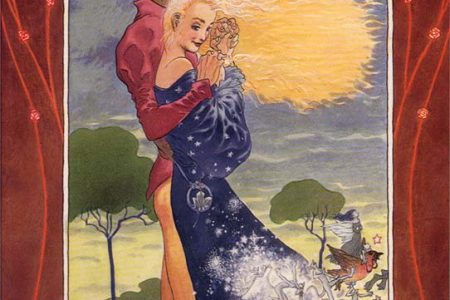By Kim Newman
I have thoroughly enjoyed Kim Newman’s alternative world vampire stories, with their wonderful blending of history and characters from literature and film, so I was looking forward to sampling the next instalment. Dracula Cha Cha Cha is another delightful addition to his ongoing storyline and it continues to combine his overwhelming love for and knowledge of genre pop culture with a clean prose style and a cheeky sense of humour.
It is 1959, and Count Dracula is to be married to Asa Vadja, Princess of Moldavia in Italy, and it will be the social occasion of the season. Vampire Kate Reed (a recurring character in the series) is a journalist who arrives into Rome to cover the wedding; on the plane, she meets an elder and his ‘niece’ (an actress much loved by the paparazzi, who will be starring in a film version of Jason and the Argonauts in Cinecitta), with whom Kate is taken on whirlwind tour of Rome (along with journalist Marcello, from La Dolce Vita). Unfortunately, the night ends with the ‘true’ deaths of the count and his ‘niece’ at the Trevi Fountain at the hands of mysterious Crimson Executioner (Part One of the book is called ‘Three Corpses In A Fountain’). These are not the first vampire elders killed by the Crimson Executioner, and they will not be the last …
Also in Rome are the heroes of Anno Dracula, Charles Beauregard, 105, and Geneviève, a vampire elder of a different line to Dracula; she is looking after him in his old age, kept alive longer by Geneviève feeding off him over the years (in a consensual loving relationship), as he still keeps watch over Dracula. He is sent a visitor from the Diogenes Club who is also interested in the Cold War implications of Dracula’s wedding – Commander Hamish Bond, by far the most fun interjection into the novel. He is obviously Sean Connery (to begin with), with references to the films, such as when spies are following him are ‘as unobtrusive as a Korean wrestler in an English golf clubhouse’ and his talk about draining the blood of ‘Chinese doctor and the Jamaican voodoo master’ – he was also made a vampire through a blood transfusion from Sgt Dravot of the Diogenes Club, the character from the Rudyard Kipling story The Man Who Would Be King played by Connery in the film.
This level of pop culture mixing is the added charm to the novel – other characters include Tom Ripley (from Patricia Highsmith’s novels), ‘the avant garde painter Anthony Aloysius St John Hancock’ (from the film The Rebel), The ‘Milanese Nightingale’ is Bianca Castafiore from Tintin, Mr and Mrs Addams (from the television series of the time), and a farm-bred Kansas quarterback called Kent who is playing Hercules in a The Argonauts, filming in Cinecitta. There’s a reference to a French policeman who was helping with the Crimson Executioner case – “the Surete sent one of their best men, and he spent most of his time falling down” – and the guests at Dracula’s party include Frank Sinatra, Dean Martin, Senator John Kennedy, Orson Welles in fat incarnation, Errol Flynn and Private Elvis Presley, plus a certain olive oil tycoon called Michael Corleone. I find it utterly charming.
The story uses the films of the time as a backdrop, with the feel of the Italian movies that era providing the inspiration, with the giallo horror films acting as a prominent cultural touchstone. I am not an expert on these films, unlike Newman, so I don’t get all the references (he provides an incomplete annotations at the back of the book), but you don’t need to in order to enjoy the story. Newman weaves a tale of three women in the midst of events that are changing the vampire world in the middle of a city that has a long history of its own and an ability to defend itself.
Included in the book is the novella Aquarius 1968, about Kate Reed in London in 1968 and the murder of humans by vampires. This story has a great sense of time mixed with fiction: MP Enoch Powell’s speech about ‘Carpathian immigrants’ and ‘rivers of blood’ is a reference to the real-life equivalent ‘Rivers of Blood’ speech about Commonwealth immigration; the phrase ‘Drakky bashing’ echoing ‘Paki bashing’, and nice touches such as Kate working for New Worlds magazine, edited by Michael Moorcock. Like the main story, this is tale with great pop culture references: there is a vampire policeman called Herrick (from the BBC3 television series Being Human), as well as (vampire) policemen Jack Regan from The Sweeney and George Dixon from Dixon Of Dock Green; Withnail is a vampire student; reference to Doctor Who: ‘the vanishing policebox’ when discussing ‘nonsensical beliefs’; Jerry Cornelius is busted for drug use but got off by Horace Rumpole; Kate uses the line ‘What’s it all about, Alfie?’ and Dixon gets to say ‘Hello, hello, what’s going on here then?’.
Newman has written another enjoyable entry in his series, with a light touch and a solid story. I am still pleasantly surprised at the excellence of his novels after knowing him only from his (also excellent) film criticism – as long as he keeps up both, I’ll keep being happy.
Disclosure: this book was provided for review purposes.




